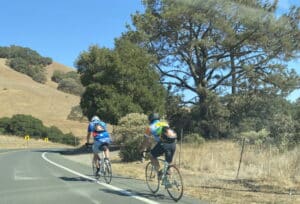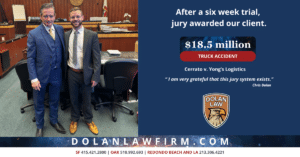This week’s question coincides with baseball season, which is the perfect time of year for me to remind readers of an important legal issue relating to their enjoyment of America’s pastime:
Q: “Who is responsible if someone gets hit with a line drive, foul ball or broken bat while watching a game?”
A: As a lawyer — and a big Giants fan — I like to start off the season by reminding people to put down your cellphone and keep your eye on the ball during play. A distraction can lead to serious and even life-threatening injury.
Balls and bats leaving the playing field and entering the stands are not uncommon. Indeed, Bloomberg reported in 2014 that roughly 1,750 spectators a year are injured by batted balls at all of the major league ballparks throughout the United States. The study showed spectators were much more likely to be hit with an errant ball than a player was to be hit with a pitch. While most injuries, thankfully, are minor, there are reports of severe injuries and even death due the use of wooden bats and presence of 90 mph fastballs.
In a 2015 Boston Globe article, baseball statistician Edwin Comber said about 73 percent of foul balls go into the stands. A 2000 lawsuit against the Boston Red Sox revealed that during a five-year period in the 1990s, 36 to 53 fans per year were hit by balls outside the field of play. Indeed, there have been reports of serious head injuries, skull fractures and even brain injuries as a result of bats and balls entering the stands.
As fans demand to be ever-closer to the action, and as high-priced seats are moved closer to the field, the risk of injury goes up — just as fast as the price.
The issue of liability for fans’ injuries was addressed by the California Supreme Court in 1935, in the case of Quinn v. Recreation Park Ass’n. The court held that one of the natural risks assumed by fans attending major league games is that of being struck by batted or thrown balls. The court ruled the franchise and/or park owner/operator is not required, nor does it undertake, to insure patrons against injury from such source. All that is required is the exercise of ordinary care to protect patrons against such injuries. Management is not obliged to make each seat safe from flying balls. The court pointed out that many patrons prefer to sit where their view is not obscured by a screen. The duty imposed by law is performed when screened seats are provided for as many as may be reasonably expected to call for them on any ordinary occasion and if a spectator chooses to occupy an unscreened seat or is unable to buy a screened seat and chooses to occupy one that is not protected, she/he “assumes the risk of being struck by thrown or batted balls; and, if injured thereby, is precluded from recovering damages therefore.”
In Neinstein v. Los Angeles Dodgers Inc. (1985), the Court of Appeals held “the quality of a spectator’s experience in witnessing a baseball game depends on his or her proximity to the field of play and the clarity of the view, not to mention the price of the ticket. As we see it, to permit a plaintiff to recover under the circumstances here would force baseball stadium owners to do one of two things: One, place all spectator areas behind a protective screen, thereby reducing the quality of everyone’s view and changing the very nature of the game, since players are often able to reach into the spectator area to catch foul balls; or two, continue the status quo and increase the price of tickets to cover the cost of compensating injured persons with the result that persons of meager means might be “priced out” of enjoying the great American pastime.
To me, neither alternative is acceptable. It is not the role of the courts to effect a wholesale remodeling of a revered American institution through application of the tort law. This decision was in line with one handed down in Ratcliff v. San Diego Baseball Club of Pacific Coast League (1938), in which the Court of Appeals held that a spectator who voluntarily occupies an unprotected seat assumes the risk of being struck by thrown or batted balls.
As with almost everything, there are some exceptions in this line of legal reasoning. For example, the courts have held that a franchise may be held liable for injury that occurred while a mascot distracted a fan during play, resulting in a fly ball to the face. (Lowe v. California League of Prof. Baseball (1997). No one is liable for a bat that inadvertently gets loose if the park owners have provided some areas of protected seating and have adequately screened the areas most likely to be at risk of flying balls and bats.
Just remember: The nosebleed seats may prevent you from getting a bloody nose.










